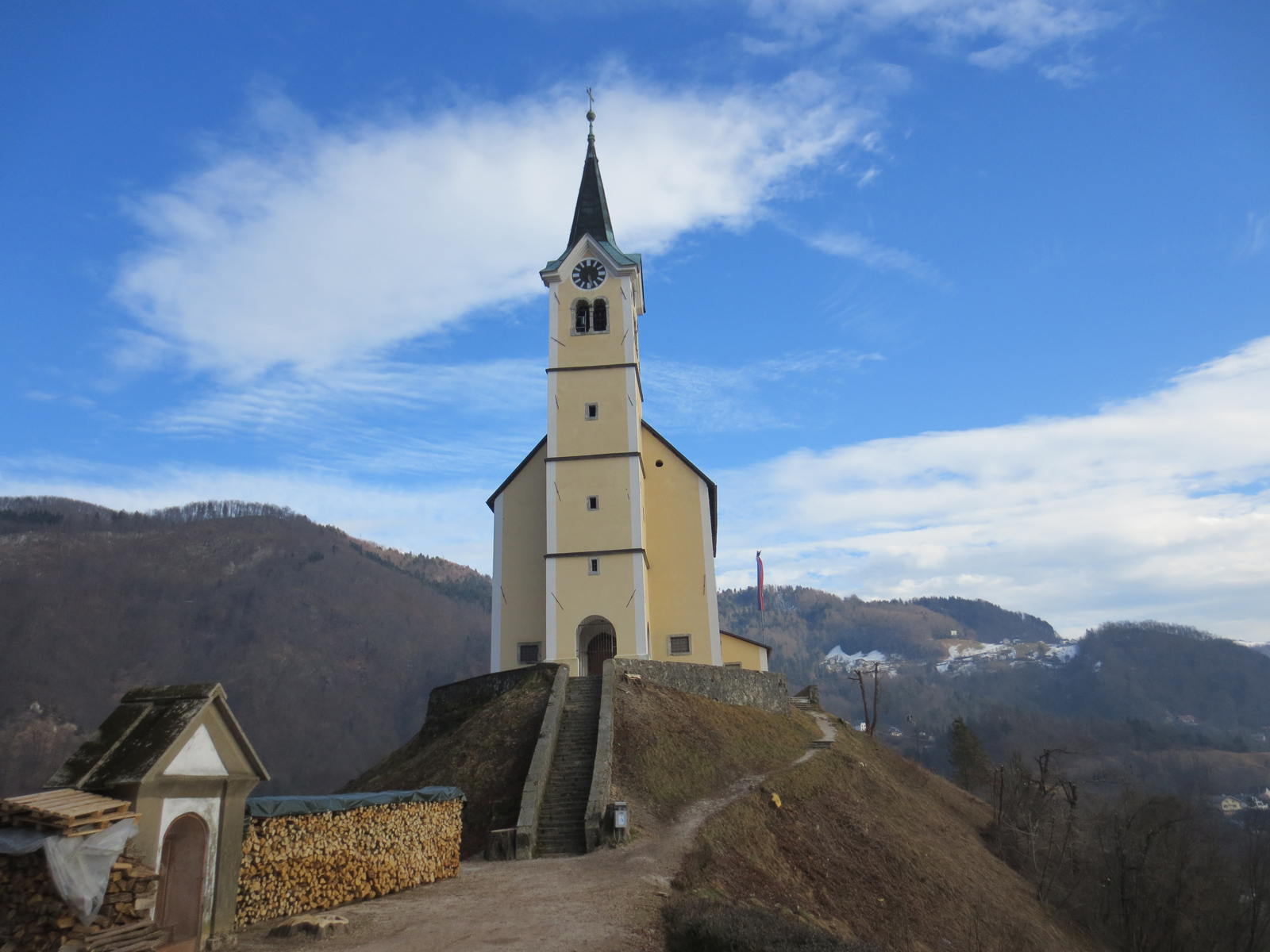Prosim, da NE odstranjujete zaklada stran od skrivališča! Postavitev ga nazaj, tako kot ste ga našli. Za najdbo uporabite svoje pisalo! // Please DO NOT take off this geocache! Leave it as if you have found it. Use your own pencil for this geocache!

Na Rožnem hribu nad Idrijo se dviga cerkev svetega Antona Padovanskega, ki so si ga rudarji izbrali za varuha pred nesrečami v jami.
Najprej so na hribu postavili znamenje s svetnikovo podobo, pozneje leseno kapelico, leta 1678 pa je bila po zaslugi rudniškega predstojnika že sezidana cerkev v današnji obliki. Za prenos gradbenega materiala in druga težaška opravila so rudarji poskrbeli z množičnim prostovoljnim delom. Zvonik je bil dozidan šele leta 1805, medtem ko je bila Kalvarija s 13 kapelicami in veliko zgornjo kapelo urejena že leta 1766. V starejših obdobjih so pri cerkvi svetega Antona prirejali celo pasijonske igre, do danes pa je ostala priljubljeno zbirališče mladine, meščanov in ob praznikih tudi romarjev iz okolice.
Notranjščina je oblikovana po značilnih pravilih podeželske baročne arhitekture.
Kompleks svetega Antona in Kalvarije je vzorčni primer sožitja med stavbarstvom in krajino. Kot tak lahko služi za zgled sodobnim arhitektom in urbanistom, ki preradi nasedajo vprašljivim modnim domislicam ter zanemarjajo prostorske danosti in krajevna izročila.
ENG
On 'Rožni hrib' above Idrija stands the church of St. Anthony of Padova, whom then miners have chosen as a guardian before mine accidents.
At first, the hill was decorated with a wooden icon of St. Anthony, was followed by a wooden chapel and in 1678, thanks to the mine director, the church as it stands today. The bellfry was added in 1805, while the stations of the cross with 13 chapels and a larger upper chapel stand there since 1766. The construction material was transported to the top of the steep hill with mass voluntary work from the miners. In earlier times, passion plays have been staged at the stations of the cross, and the site remains a popular meeting point for youth and pilgrims.
The insides of the church are decorated in a style that is typicall of rural architecture from the Baroque period. The complex is regarded as a worthy example of symbiosis between architecture and landscape modern architects and urbanists can (should) learn from.